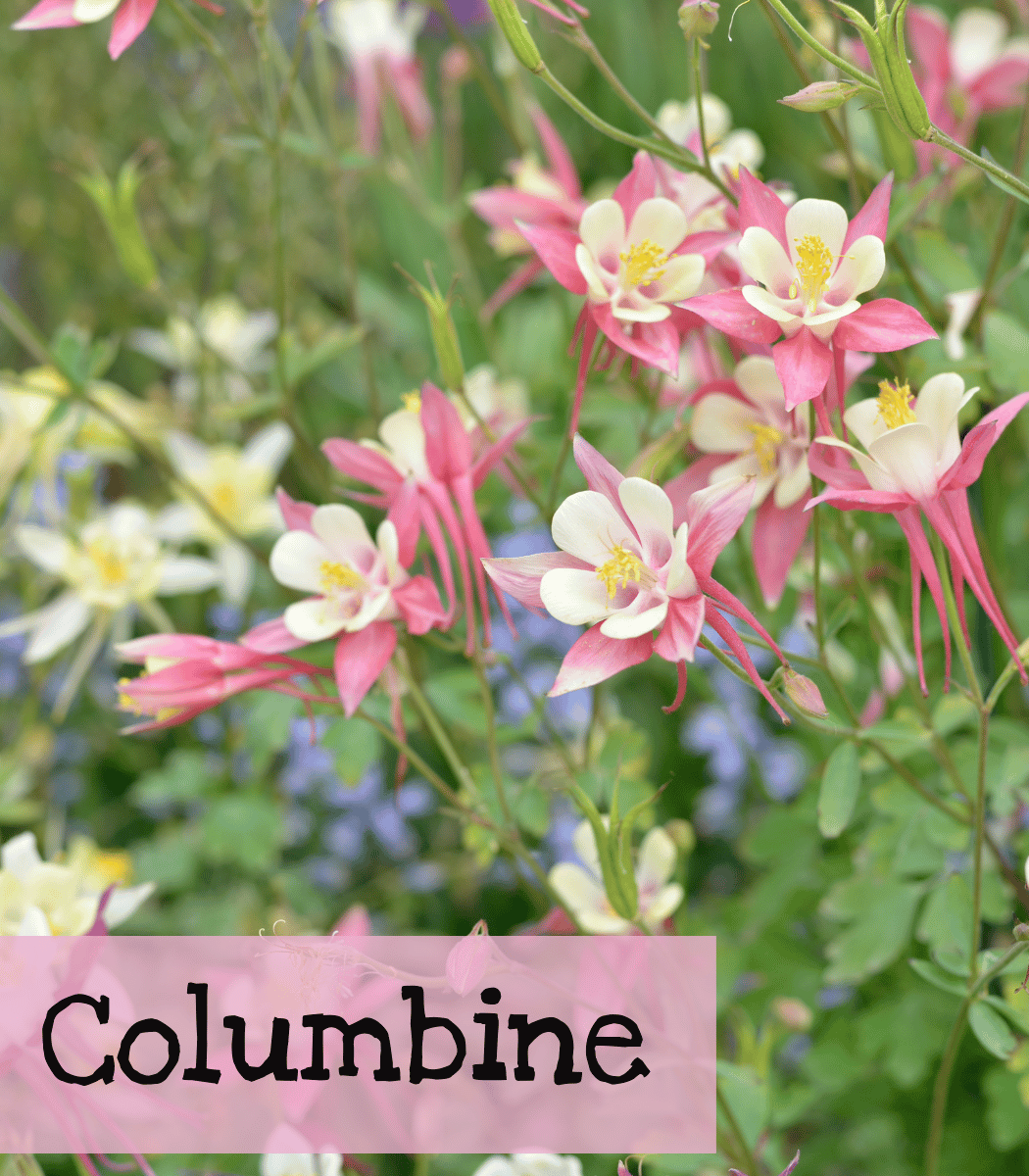
Columbine
Loved by hummingbirds and pollinators, columbine is a fragrant flower. Its splashy, exotic-looking flowers add elegance to borders, rock gardens, and flower gardens alike!
|
Harlequin Mixed Colors; Leprechaun Gold |
|
Aquilegia vulgaris |
|
Intermediate to start from seed Easy once established |
|
Intermediate |
|
2 years if properly stored |
|
Perennial |
|
22-30 days |
|
Cold Stratification |
|
Surface Sow |
|
24-36” |
|
Seeds need light to germinate Part shade or full sun |
|
Spring-Summer |
|
February, March, September |
|
Yes |

Growing Tips



4 plants per 20” container
When to Start
Intermediate to start from seed, easy once established.
Early Fall: Direct sow 3-4 weeks before the last frost. (Mid-October for Jefferson, GA)
Late Winter: Start cold stratification 9-11 weeks before the danger of frost has passed. (Early February for Jefferson, GA)
How to Start
For best results, columbine seeds need cold stratification. There are 2 ways you can do this. One is to start cold stratification 9-11 weeks before transplanting. (February for GA) Sow the seeds into seed cells filled with pre-moistened seed starting mix, to a depth of 1/4 inch. Place the cells in a plastic bag and place the seeds in the refrigerator for 4 weeks. You may need to put them on a piece of cardboard to keep them from tipping. Keep the soil moist but not soggy. Periodically check on them to make sure no mold is forming and the soil is still moist. After the 3 weeks, start the seeds indoors under grow lights. This should be 6-8 weeks before transplanting. (Early to mid-March for Jefferson, GA.) Transplant after hardening off, and the danger of frost has passed. (May 1 for Jefferson, GA.)
The second way is to let nature cold stratify for you. Direct sow 3-4 weeks before the last average frost. (Mid-October for Jefferson, GA.) Space or thin plants to 10’’ apart.
Care
While Columbine can handle full sun, it dislikes hot summers. In warmer areas (like GA), plant columbine in part shade. It isn’t too picky about the soil as long as it’s not too dry and is well-draining. Mulch to help keep the soil moist and weeds down. Until the plants are well established, keep them moist. Then, only weekly watering is necessary unless there is a dry period. Regular fertilizing will help produce brighter blooms and thicker foliage. Deadheading will encourage additional blooms. After the season, cut back to the ground.
Columbine will self-seed. This is beneficial as the plants tend to be short-lived, living only 3-4 years.
Seed Saving

Isolation Distance
Insect dependent for pollination. Isolate 1/2 mile to prevent cross-pollination.
Instructions
Select healthy, robust plants free of any signs of disease or insect infestation for seeds. Seeds carry the traits of the parent plant. Choose plants that exhibit the traits you wish to preserve. Consider bloom size, color, and shape, as well as blooming time.
Allow the biggest and healthiest blooms to mature on the plant. Cover the seed head with a fine-mesh bag as soon as the flower petals shrivel and die. Use an elastic band to hold the bag in place. This prevents seeds from spilling onto the soil before harvest.
Clip the flower head from the main stem once the seeds are dry and dark. Separate plant debris from the seeds by removing the mesh bag and placing the flower head in a paper bag and shaking to loosen the seeds. Seeds settle to the bottom of the bag. Remove plant debris by hand.
Features
- Blooms in Spring and Summer
- Attracts hummingbirds and pollinators
- Deer and rabbit resistant
- Drought and poor soil tolerant
- Good cut flowers
- Container friendly
- Harlequin Mixed Colors: Flowers are a mix of white, yellow, pink, blue, purple, and many bicolors too. They produce blooms earlier than other varieties.
- Leprechaun Gold: Heirloom. Hardy in zones 4a-8b. It grows in mounds 18 inches tall, and flower stems reach 24 inches tall. Blooms are a midnight plum color.

Columbine doesn’t care for hot Summers. In the South, plant in part shade and give it plenty of mulch to keep the soil moist.
Sources:
Edenbrothers.com
